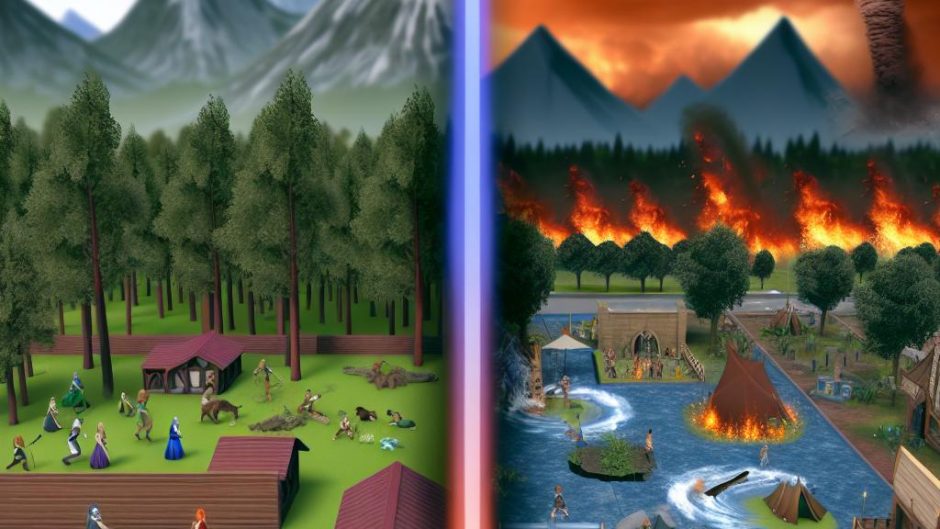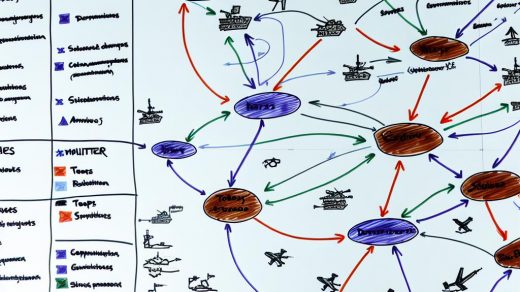The Dynamics of Natural Disasters in Gaming Worlds
Natural disasters, both real and fictional, have become increasingly prevalent in the realm of video games. These phenomena not only intensify the atmosphere but also offer players unique challenges and possibilities. Through the lens of gaming, natural disasters provide an engaging way to simulate real-world issues and test players’ abilities to adapt and strategize in high-pressure situations. Let’s delve deeper into how natural disasters shape gameplay, the role of technology in these simulations, and the social implications they harbor.
Realism and Immersion in Gameplay
Integrating natural disasters into gameplay significantly increases the level of realism and immersion players experience. Titles like “SimCity” and “Cities: Skylines” incorporate disasters such as earthquakes and tornadoes. These simulations require players to engage in strategic planning and allocate resources effectively. In doing so, players confront the pressures and unpredictability associated with managing a city besieged by the forces of nature. By bringing such disasters to life, developers create situations that mirror real-world challenges, thus adding an additional layer of complexity and engagement to the games.
Moreover, weather-related challenges enhance a game’s narrative by introducing variables that can affect gameplay dynamics. For instance, in “The Legend of Zelda: Breath of the Wild“, inclement weather like rain or thunderstorms not only influences the visual setting but also impacts gameplay mechanics. Such weather conditions can alter player strategies, requiring them to adapt their approach to the unfolding scenario. This interplay between the environment and player actions adds depth and realism to the overall gaming experience.
Challenges in Managing Disaster Effects
Natural disasters within games often necessitate quick player adaptation. Whether it involves diverting resources to repair damaged infrastructure, managing scarce supplies, or adjusting strategies to compensate for diminished capabilities, these scenarios challenge players’ problem-solving skills and adaptability. The game “Frostpunk” exemplifies this by placing players in a post-apocalyptic frozen world where they must make critical decisions impacting their population’s survival. Such gameplay requires intricate planning and an understanding of prioritization, as each decision can have lasting consequences.
In disaster scenarios, players must often reckon with balancing immediate needs and long-term sustainability. The pressure to act swiftly, coupled with the need for strategic foresight, can test even the most adept players. The dynamic nature of these challenges ensures that player experiences remain engaging and diverse, as no two disaster scenarios are identical.
The Role of Technology in Simulating Natural Disasters
Technological advancements have empowered game developers to create more lifelike simulations of natural disasters. Enhanced graphics facilitate the detailed depiction of phenomena like hurricane winds or volcanic eruptions, providing players with visibly impressive and authentic experiences. Meanwhile, improved physics engines enable developers to simulate the impact of disasters on the game environment, such as the way structures collapse or debris is scattered.
Incorporating artificial intelligence into these simulations ensures that disaster scenarios are dynamic and unpredictable. AI-driven systems can generate unique events and responses, meaning no two disaster experiences are ever the same, maintaining player engagement and offering fresh challenges. For further exploration into the technological intricacies that enable such simulations, you can visit Game Technology.
Impacts on Social Interactions and Community Responses
In multiplayer gaming environments, natural disasters not only affect gameplay mechanics but also transform social dynamics and player interactions. Confronted with a common threat, players often need to collaborate, fostering a sense of community and shared goals. Games such as “Fortnite” strategically introduce disastrous events that necessitate cooperative gameplay, which in turn promotes social bonds among players.
Additionally, natural disasters in gaming can serve as educational tools. By simulating real-world scenarios, these games provide players with insights into effective disaster management and preparedness strategies. They emphasize the importance of strategic planning, resource management, and community collaboration in overcoming environmental challenges. Games with such educational underpinnings provide valuable lifesaving lessons and encourage a deeper understanding of resilience in the face of adversity. To explore more educational insights within the gaming sphere, you can check Game Education.
In conclusion, natural disasters in video games represent powerful mechanisms for enhancing realism, challenging players, and fostering social interactions. Their role in games not only enriches the overall experience but also offers profound lessons in adaptability and resilience. Through thoughtfully crafted simulations, these games can be both entertaining and educational, inviting players to contemplate and confront the complexities of navigating a world shaped by powerful natural forces. As the technology underpinning these simulations continues to evolve, so too will the intricacy and authenticity of the virtual worlds they resemble.
This article was last updated on: June 17, 2025






Recent Comments